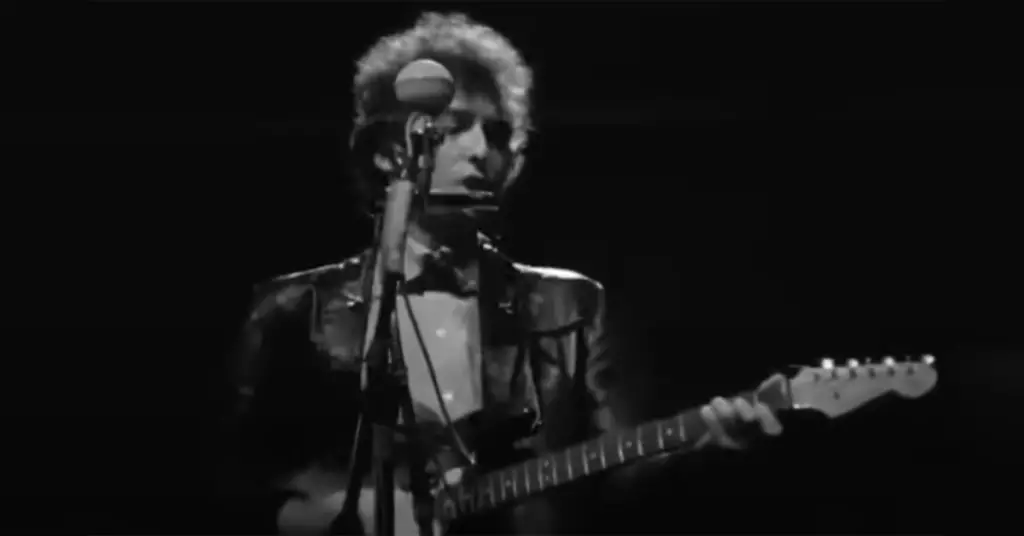Bob Dylan – “Like a Rolling Stone”: The Song That Rewrote Rock ‘n’ Roll
Few songs in history mark a before and after moment, but Bob Dylan’s “Like a Rolling Stone” didn’t just change his career—it changed the very DNA of popular music. Released in 1965, it was the sound of a seismic shift: poetry crashing into rock, acoustic folk morphing into electric fire, and Dylan stepping fully into his role as the voice of a restless generation.
More than half a century later, “Like a Rolling Stone” remains one of the most celebrated, dissected, and influential recordings ever made. It’s not just a song—it’s a declaration of independence, both personal and cultural.
The Sound: When Dylan Plugged In
“Like a Rolling Stone” begins with a whipcrack of a snare drum, and from that moment on, it never lets up. It was Dylan’s first major release with a full electric band, and the sound was revolutionary—gritty organ swirls, jangly guitars, thudding bass, and a propulsive beat that rolled like a freight train.
Al Kooper’s swirling Hammond B3 organ, famously added as a spontaneous overdub, became the song’s secret weapon, swirling behind Dylan’s vocal like a restless spirit. Mike Bloomfield’s guitar work adds edge and attitude without ever stealing focus.
The result? A sound that was too electric for folk purists, too poetic for pop radio, and yet utterly irresistible.
The Lyrics: Cutting, Cryptic, and Cold as Ice
“Once upon a time you dressed so fine / Threw the bums a dime in your prime, didn’t you?”
From the first line, Dylan turns the mirror back on the listener—or more specifically, on a character who once held power, privilege, or illusion and now finds themselves adrift, exposed, and alone.
“Like a Rolling Stone” is a six-minute epic of verbal venom and lyrical genius, structured around a repeated, devastating chorus:
“How does it feel / To be on your own / With no direction home / Like a complete unknown / Like a rolling stone?”
It’s not just a song about a fall from grace—it’s a song about identity stripped bare. And yet, it’s never self-pitying. It’s accusatory, liberating, and hauntingly universal. Dylan’s delivery is sneering, snarling, and impossibly alive.
Revolution on the Radio
When Columbia Records released “Like a Rolling Stone” in July 1965, they were hesitant. At over six minutes, it was twice as long as most singles. But the song was too powerful to ignore. DJs began playing it in full, and it climbed to #2 on the Billboard Hot 100, just behind the Beatles’ “Help!”
This was a turning point. Dylan proved that songs could be long, literate, angry, surreal, and still top the charts. The boundaries of rock had just been blown open.
Cultural Shockwaves: Dylan as Prophet and Provocateur
“Like a Rolling Stone” cemented Dylan’s transformation from folk troubadour to electric oracle. He debuted it live at the infamous Newport Folk Festival in 1965, where die-hard folk fans booed as he plugged in his Stratocaster. To some, he had “betrayed” folk purity. But to others, he had just invented something new—a bold, poetic, plugged-in kind of rock and roll.
The song became a cultural touchstone. It’s been interpreted as a critique of privilege, a comment on social upheaval, and a personal purging. Dylan never confirmed its exact inspiration—possibly socialites like Edie Sedgwick, or just a larger commentary on fading illusions—but that’s part of the power. It invites projection, reflection, and endless reinterpretation.
Legacy: The Greatest Song Ever Written?
Critics have often called “Like a Rolling Stone” the greatest rock song ever made. In 2004 and again in 2021, Rolling Stone magazine ranked it #1 on their list of the 500 Greatest Songs of All Time. It has influenced artists from Bruce Springsteen and Patti Smith to U2 and The Rolling Stones.
More than that, it changed how music was written, produced, and understood. It helped birth album-oriented rock, gave legitimacy to lyric-driven songwriting, and showed that intellectual, emotional, and rebellious depth could coexist in pop music.
Final Thoughts
“Like a Rolling Stone” is not just a milestone.
It’s a revolution in four verses and a chorus.
It told the world that rock could be literature. That music could confront, confound, and challenge. That one voice, one snare crack, one sneer of a line could shake the walls.
So how does it feel?
To hear it again today?
Like the first time, every time.

Want to dive deeper into Dylan’s electric era with “Ballad of a Thin Man,” “Tombstone Blues,” or “Just Like Tom Thumb’s Blues”? Or explore the folk roots of his transformation in The Freewheelin’ Bob Dylan? Just let me know!


Facebook Comments